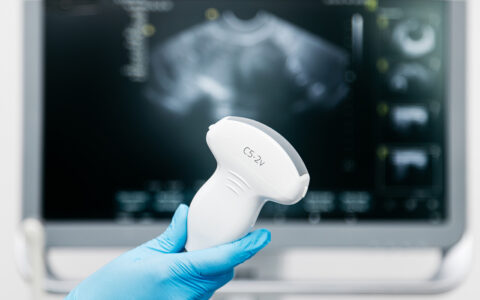Emerging research is shedding light on the role of parvalbumin-expressing interneurons (PV-Ins) in the pathophysiology and cognitive-behavioral deficits seen in a variety of neuropsychiatric disorders, including schizophrenia, bipolar disorder, and Alzheimer’s.
Researchers at Vanderbilt University Medical Center are conducting investigations to better understand the cellular mechanisms of PV-INs in the hippocampus and adjacent cortical areas, the stressors that impact them, and the implications of cell injury in the development and progression of neuropsychiatric diseases.
Identifying PV-IN stressors may be a key to developing targets for their preservation or recovery.
“What’s so interesting about these interneurons – and why they’re so sensitive – is that they have a very high demand for energy,” said Christine Konradi, Ph.D., a neuroscientist in the Vanderbilt Center for Early Psychosis. “Because of this demand, stressors affect them first, and they are probably the first neurons that go away.”
The investigators are also determining how PV-IN injuries occur across such a wide array of diseases, said Laura Dugan, M.D., Abram C. Shmerling M.D. Chair in Alzheimer’s and Geriatric Medicine at Vanderbilt.
“It could be because there’s this energy deficit, or they could be injured by other stressors, such as prolonged exposure to hypoxia,” Dugan said.
In a 2021 paper in Neuropsychopharmacology, Dugan and Konradi, along with first author Jacob Ruden, Ph.D., reviewed all the available literature on PV-INs.
“We wanted to bring together everything that’s known to allow us to dig deeper into our hypotheses,” Konradi said.
In a new study to be published later this year, Dugan’s lab examines PV-INs in response to the pro-inflammatory stimulus that occurs in patients with pneumonia, heart failure, ICU admission, or COVID-related lung failure.
Impact on Neuropsychiatric Disorders
PV-INs have unique cellular and molecular properties that influence the downstream effects of brain signaling. Their high excitatory drive contributes to their vulnerability.
Approximately 10 percent of neurons are interneurons, Konradi explained.
“We believe they permit information to be released to the next neuron or cut it off. They filter out noise,” Konradi explains. “One of the reasons they need so much energy is that they fire so rapidly; they need a lot of [adenosine triphosphate] to meet their energy needs.”
Konradi studies the brain mechanisms that lead to psychosis, with particular focus on neuronal damage. Her lab works closely with Stephan Heckers, M.D., William P. and Henry B. Test Professor and Chair in the Department of Psychiatry and Behavioral Sciences at Vanderbilt. Heckers is an expert in the diagnosis and treatment of patients with schizophrenia spectrum disorders and bipolar disorder.
“Our interest stems from post-mortem studies where we found a 40- to 60-percent decrease in interneurons in the hippocampus in patients with schizophrenia and bipolar disorder,” Konradi said.
“If you looked at bipolar disorder with MRI mass spectrometry, you may see that these cells are running on empty; they have barely enough energy to survive. Then you have a stressor that requires more – they just can’t do that; it’s the energy reserves that are missing.”
Interneuron Development and Decline
The developmental trajectory of interneurons, which requires them to migrate through the brain early in development, introduces unique vulnerabilities, Konradi notes.
“They have to find their proper place; in embryonic development things can go wrong. We might not see it right away, but it manifests in the late teens or later in life when we’re starting to lose neurons,” she said.
“In some cases, there might be an actual deficit because they didn’t migrate correctly; in other cases, they may be super-sensitive to a lack of energy. If you find that it is something wrong with the migration, you see the pathology early.”
“PV-INs are damaged, but not dead, and so treatments targeting their recovery could be very effective.”
Plasticity built into the brain can make up for a deficit for a while, she adds. “You usually see this overabundance, then pruning occurs.”
Later in life, there may be multiple factors causing PV-IN injury, such as inflammatory conditions combined with pharmaceutical overload and anesthesia. The Dugan lab’s new study shows that these injured PV-INs may have the ability to recover.
“The important finding is that these PV-INs are damaged, but not dead, and so treatments targeting their recovery could be very effective in preserving them and helping to restore normal brain function after these often-catastrophic disease processes,” Dugan said.





